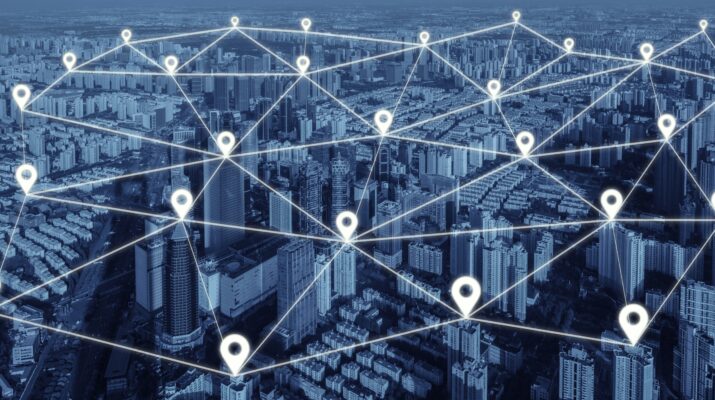In today’s fast-paced digital world, staying connected is no longer a luxury—it’s a necessity. Whether it’s for work, streaming, or simply staying in touch with loved ones, internet connectivity plays a vital role in our daily lives. But have you ever wondered how internet providers bring high-speed connections to your home or business, especially in remote areas? The answer lies in “last mile internet solutions“.
This article will break down the concept of last mile internet, explore its significance, and explain how it works in simple, engaging terms. Let’s get started!
What Is Last Mile Internet?
The term “last mile” refers to the final leg of a telecommunications network that delivers internet services to end users. This “mile” connects the internet service provider’s (ISP) main network to your location, whether it’s your home, office, or a rural community. Despite the name, the “last mile” can range from a few hundred meters to several kilometers.
Think of the last mile as the finishing touch in the process of delivering internet to you. It bridges the gap between high-capacity data transport networks and your device, ensuring seamless connectivity.
Why Is the Last Mile Important?
The last mile is crucial for several reasons:
- User Experience: The quality of your internet experience heavily depends on how efficiently data travels through the last mile. Slow or unstable connections often result from last mile challenges.The quality of your internet experience heavily depends on how efficiently data travels through the last mile. Slow or unstable connections often result from last mile challenges.
- Accessibility: The last mile determines whether people in rural or underserved areas can access reliable internet services.
- Scalability: As internet usage grows, the last mile must adapt to handle increasing demand without compromising speed or reliability.
Types of Last Mile Internet Solutions
There are various technologies used to deliver last mile internet. Each has its own strengths and weaknesses. Let’s explore the most common ones:
1. Fiber Optic
Fiber optic technology uses light signals transmitted through thin glass or plastic fibers to provide ultra-fast internet.
Advantages:
- Extremely high speeds.
- Reliable and resistant to interference.
- Future-proof with high scalability
Challenges:
- Expensive to deploy, especially in rural areas.
- Requires significant infrastructure investment.
2. DSL (Digital Subscriber Line)
DSL uses existing telephone lines to deliver internet services.
Advantages:
- Affordable and widely available.
- Easy integration with existing infrastructure.
Challenges:
- Limited speed compared to modern technologies.
- Signal degrades over longer distances.
3. Cable Internet
Cable internet delivers data through coaxial cables, often alongside television services.
Advantages:
- Faster speeds compared to DSL.
- Widely available in urban areas.
Challenges:
- Shared bandwidth can lead to slower speeds during peak usage.
- Limited reach in rural areas.
4. Wireless Solutions
Wireless technologies like 4G, 5G, and Fixed Wireless Access (FWA) use radio waves to transmit data.
Advantages:
- Quick deployment and minimal infrastructure.
- Ideal for remote areas.
Challenges:
- Limited by signal strength and weather conditions.
- Speeds may vary.
5. Satellite Internet
Satellite internet uses satellites to beam data directly to dishes installed at users’ locations.
Advantages:
- Available even in the most remote areas.
- Independent of local infrastructure.
Challenges:
- High latency due to long signal travel distances.
- Expensive compared to other options.
Challenges in Last Mile Internet
Despite technological advancements, the last mile faces several hurdles:
- High Deployment Costs: Laying fiber or installing equipment in remote areas can be prohibitively expensive.
- Geographical Barriers: Mountains, forests, and rivers make infrastructure deployment challenging.
- Bandwidth Demand: Growing data needs strain existing last mile networks.
- Infrastructure Gaps: Many rural or underserved regions lack basic infrastructure for reliable connectivity.
Innovations Improving Last Mile Internet Solutions
The good news is that innovations are helping overcome these challenges.
- 5G Networks: With faster speeds and lower latency, 5G is revolutionizing wireless last mile solutions.
- Low-Earth Orbit Satellites: Companies like Starlink are deploying satellite networks that promise reduced latency and wider coverage.
- Hybrid Solutions: Combining fiber, wireless, and satellite technologies ensures optimized performance.
- Edge Computing: By processing data closer to the user, edge computing reduces latency and enhances reliability.
How Businesses Benefit from Last Mile Solutions
For businesses, last mile internet solutions are a game-changer. Here’s why:
- Enhanced Productivity: Reliable internet ensures smooth operations and uninterrupted communication.
- Customer Satisfaction: Businesses can deliver seamless online services and experiences to customers.
- Scalability: Modern last mile solutions can grow with your business needs.
The Role of Providers Like ifiber
Companies like ifiber specialize in delivering cutting-edge last mile internet solutions. Their services ensure:
- Seamless Connectivity: Tailored to meet individual and business needs.
- Reliable Coverage: Minimizing dead spots, even in challenging environments.
- Cost-Effective Solutions: Offering flexibility without compromising quality.
The Future of Last Mile Internet
The future of last mile internet is bright, driven by advancements in AI, IoT, and cloud computing. We can expect:
- Smart Networks: AI-driven optimization for better resource management.
- Ubiquitous Connectivity: Internet access for everyone, everywhere.
- Sustainable Solutions: Eco-friendly approaches to infrastructure development.
Conclusion
Last mile internet solutions are the unsung heroes of our connected world. They bridge the critical gap between high-speed networks and end users, ensuring we stay connected no matter where we are. Whether you’re in a bustling city or a remote village, the last mile determines your internet experience.
By embracing innovative technologies and addressing challenges, the future of last mile connectivity looks promising. Companies like ifiber are leading the way, ensuring seamless, reliable, and cost-effective solutions for all.



